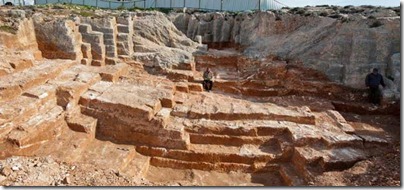Most of the settlement layers of Tel Afula were destroyed by construction activity in the 1950s, but a recent salvage dig found remains from the Early Bronze I and Roman period.
Archaeologists working in the Ir Gannim neighborhood of Jerusalem excavated a winepress possibly first used in the Iron Age II and again in the Hasmonean period. A large storage pool was built here in the first century AD.
A preliminary report from the 2011 season at Horbat Huqoq describes the project’s goals (synagogue and 2-3 houses) and reports on the initial progress including the excavation of a mikveh. This report does not describe the beautiful mosaic floor depicting Samson that was found in the 2012 season.
Excavations near a site that Charles Wilson incorrectly thought was Capernaum have exposed three strata from the 13th-14th centuries. The dig at Huqoq Beach is 80 meters east of the entrance to the Khirbet el-Minya Umayyad palace.
Excavations on the east side of the Mount of Olives were prompted by the chance discovery of a relatively rare Armenian mosaic from the Byzantine period.
Two adjacent quarries were excavated in Beit Hanina north of Jerusalem. They provided Jerusalem with maleke limestone from the time of Jesus until modern day.
